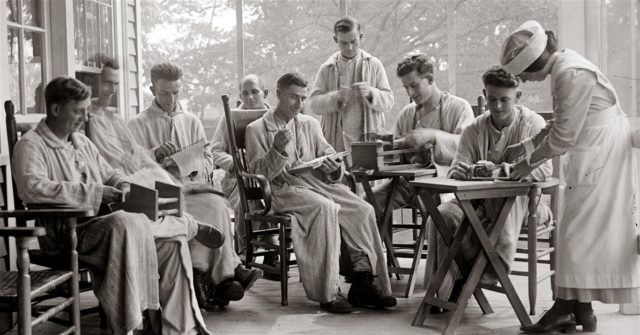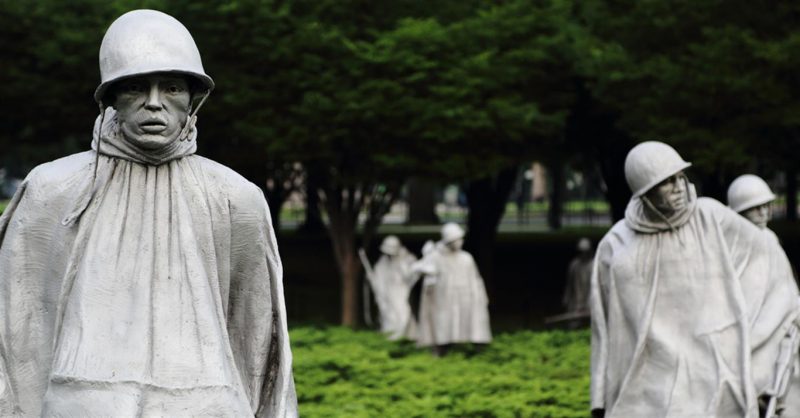By Guest Blogger Helen Fraser For War History Online
Post-Traumatic-Stress-Disorder or ‘PTSD’ is a very familiar term nowadays. We associate it most with war veterans and, indeed, former servicepeople are disproportionately affected by the condition.
This is entirely understandable, as the condition is triggered by witnessing or experiencing events so traumatic that the human brain and psyche simply cannot process them – and modern warfare provides this kind of experiences in depressingly large quantities.
We are all too well aware nowadays of the problem of PTSD within the armed forces – particularly, for some reason, the American armed forces. However, it has not always been thus.
Comprehension of war’s potential to damage the minds of those who fight has led to a good deal of confusion, prejudice, and even death over the years.
Here is a short history of PTSD – or, rather, a short history of our understanding of PTSD…
Trauma And Culture
PTSD has almost certainly been around for as long as humans have been experiencing traumatic events. Indeed, lesser-evolved species can display post-traumatic symptoms, seeming to indicate that the propensity for PTSD may even be pre-human.
However, it was a long, long time before we began to draw the link between the curious behaviors exhibited by PTSD sufferers, and the traumatic events to which they were subjected.
This may seem odd nowadays, but it must be remembered that we are used to looking at things in a scientific manner. We are accustomed to judging things via cause and effect, whereas previous cultures judged things in terms of divine providence, or of moral character.
Thus, while it was noted long ago that those who had served in particularly traumatic wars were more likely than many to abuse alcohol, or to behave unpredictably, this was often put down to the ‘soldierly temperament’.
For example, while many ancient texts speak of things which we would clearly recognise today as PTSD (soldiers being ‘stricken dumb with terror’, going ‘berserk’, self-mutilating, becoming hyper vigilant, etc), these are explained away as ‘faint-heartedness’, becoming ‘drunk with rage’ due to the aforementioned ‘soldierly temperament’, or even being possessed by the souls of slaughtered enemies.

First Glimpses
For a long time, the idea persisted that those who displayed PTSD symptoms were simply ‘not up to’ soldiering. The condition was downplayed, when it was noticed at all. Few considered it a serious reason not to go to war.
However, as the centuries progressed, warfare became a far larger and more deadly affair. By the time of the Franco-Prussian and American Civil wars, humans were not only recruiting armies on unprecedented scales, but had developed weaponry capable of dealing exceedingly brutal damage to large numbers of people at a single stroke.
Furthermore, these increasingly deadly wars frequently involved the use of conscripted soldiers – many of whom simply were not mentally prepared for the horrors they were about to witness.
The particularly divisive nature of the American civil war (1861-1865) – the slaughter of people who were, in the minds of many combatants, just like themselves, left deep psychological imprints. Meanwhile, the brutal and desperate nature of the Franco-Prussian war (1870-1871) led to many cases which we can retroactively diagnose as PTSD.
These wars marked the start of scientific observation of the condition, and the first glimpses of correlation between trauma and serious psychological disturbance.
However, the understanding that mental health problems resulting from this trauma was not a result of character weakness was still a long way off. Instead, physicians studying PTSD cases tended to diagnose physical rather than mental symptoms.
Dr Jacob Mendez da Costa studied the phenomenon of elevated heart rates among US Civil War veterans – something we can now attribute to the anxiety and hypervigilance of PTSD.
However, he considered it due to overexertion of the cardiovascular system. ‘Da Costa’s Syndrome’ became known colloquially as ‘Soldier’s Heart’.
At the same time, survivors of traumatic accidents who reported psychological symptoms (again, due to what we now know to be PTSD) were diagnosed with a condition called ‘Railway Spine’ – considered to be due to the ‘jolt’ received by the central nervous system during the accident.
Shell shock
It was during the absolute horrors of World War One, however, that PTSD came into its own. Trench warfare was unlike anything the world had ever seen before, and death was dealt both horribly and on an unfathomable scale.
The horrors witnessed by those fighting in the trenches, and the constant bombardment of terrors to which their senses were subjected drove many, unsurprisingly, quite out of their minds.
‘Shell shock’, as it was called back then, saw many soldiers transformed into quivering zombies, unable to process what was going on around them. Those who treated these men were bewildered, and often angered by this condition – which they simply could not understand.
Many suffering from severe PTSD were shot for ‘cowardice’. Others were dosed up with opioids and shoved back into the trenches. But after a while, the scale of the problem became too big to simply dismiss as lack of moral fibre.
Following the War, the British government held an enquiry into the phenomenon, which established that ‘nervous or neurological difficulties’ were a feature of traumatic warfare, and should be treated appropriately.
However, there was an awfully long way to go before the condition gained the understanding and recognition it deserved. Indeed, we are still not quite there yet, 100 years later!
By Helen Fraser
